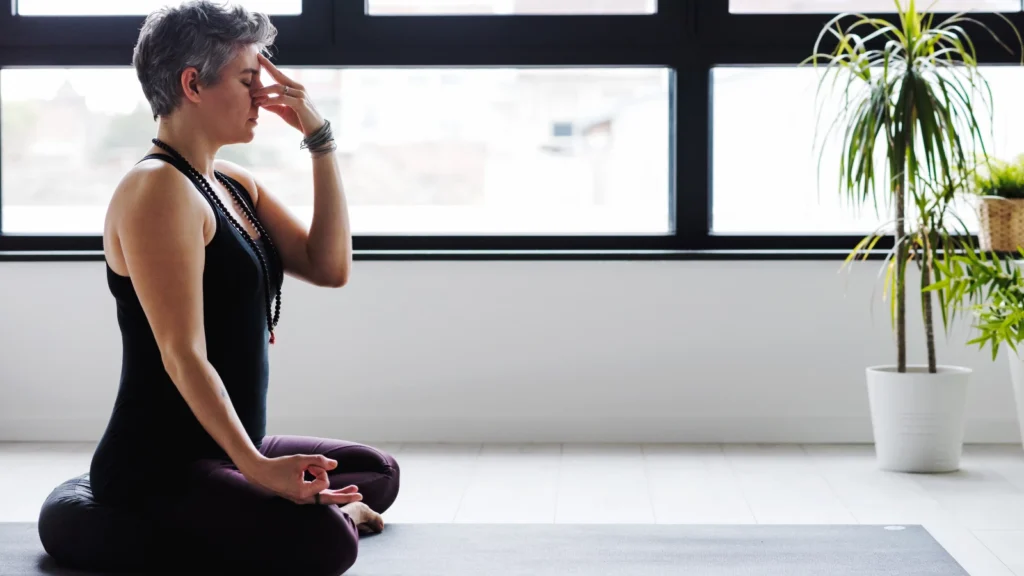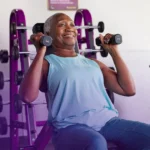
Public speaking and interviews can be nerve-racking. Your heart beats fast. Your mind races. You may forget what to say. But a simple, ancient practice can help. It is yogic breathing, also known as pranayama. This article explains how pranayama can calm your body and mind. It also shows why it works—and how you can use it—before stepping on stage or starting an interview.
What Is Yogic Breathing?
Pranayama is a breathing exercise from yoga. The Sanskrit word means “control of life force.” You focus on breathing rhythm. You breathe in, hold, or breathe out in specific ways. This helps adjust your body’s energy. There are many pranayama techniques. Among them, Nadi Shodhana, Bhramari, Ujjayi, Kapalabhati, and Bhastrika are most useful for speaking and performance.
Why Use It Before Speaking?
1. Reduces Anxiety and Stress
Studies show pranayama lowers stress. In one study, students who practiced regular pranayama felt less exam anxiety and scored higher .
Another trial found yogic breathing reduced inflammation markers in saliva, linked to stress and anxiety.
Brain scans after Bhastrika pranayama showed reduced anxiety and improved emotion control.
2. Improves Voice and Lung Capacity
Techniques like Bhramari help singers by strengthening the voice.
Stronger lungs and better breath control make your voice sound steady and strong.
3. Sharpens Focus and Clarity
Studies show pranayama increases attention and memory.
That means less chance of mental blank-outs during interviews or speeches.

Read more : Yoga in Bed: A Cozy Start for Rainy Days
How to Practice Before a Speech or Interview
Here are five simple pranayama exercises. They take 5–10 minutes. Try them before your big moment.
1. Nadi Shodhana (Alternate Nostril Breathing)
- Sit up straight. Relax.
- Close right nostril. Inhale through left.
- Close left. Exhale through right.
- Inhale right. Exhale left.
- Do 5–10 rounds.
This balances left and right brain, calming nerves and improving clarity.
2. Bhramari (Bee Breath)
- Sit comfortably. Place index fingers on ears.
- Inhale deeply through nose.
- Exhale slowly, humming like a bee.
- Feel vibration in head.
- Repeat 5–7 times.
This soothes the nervous system. It also improves voice quality.
3. Ujjayi (Victorious Breath)
- Slightly constrict the throat.
- Inhale and exhale through nose, with soft ocean-like sound.
- Continue for 5 minutes.
This calms nerves and enhances voice projection.
4. Kapalabhati (Skull Shining Breath)
- Sit upright.
- Exhale sharply from nose, pulling navel in.
- Let inhale happen passively.
- Do 20–30 exhalations. Rest. Repeat 2–3 times.
This energizes your body and clears mental fog.
5. Bhastrika (Bellows Breath)
- Inhale deeply, then exhale forcefully through the nose.
- Do 10–20 fast rounds.
- Pause and breathe normally.
- Repeat twice.
This boosts energy and sharpens focus .
Sample Routine Before Your Event
- 1 minute: Sit quietly. Slow your breath.
- 2 minutes: Nadi Shodhana.
- 2 minutes: Bhramari.
- 1 minute: Ujjayi.
Optional: Add 1–2 minutes of Kapalabhati or Bhastrika if you feel tense.
Most of the time, people feel a noticeable calm and alertness.

Scientific Support from India
Indian researchers are studying pranayama’s effects in real settings:
- M.A. students who used pranayama had 50% less test anxiety than peers.
- Karnataka singers improved their voice quality after daily Bhramari practice.
- Studies of Ujjayi, Bhastrika, and Kapalabhati show better lung capacity, voice control, and mental focus.
These results support what tea stall conversations and local yoga classes already say: pranayama works.
Tips for Indian Audience
- Combine with meditation or quiet time. Sit in any clean corner of your home. A quiet evening or sunrise time is best.
- Use guidance if needed. Local yoga teachers, YouTube channels, or apps can help you learn proper technique.
- Be consistent. Even 5 minutes daily help more than one long session.
- Practice before smaller events. Try before class or family speech. This builds confidence.
In Summary
Yogic breathing is easy, free, and powerful. In just a few minutes, it lowers stress. It sharpens mind. It steadies voice. Whether it is a job interview or speech at your school, pranayama gives you calm and power. It connects ancient Indian wisdom with modern science. So next time your palms are sweaty before a talk, take a few deep yogic breaths. Let your voice and mind shine.
With this technique, you can feel confident. You can speak clearly. And you can make every word count.
Author: Sonam










